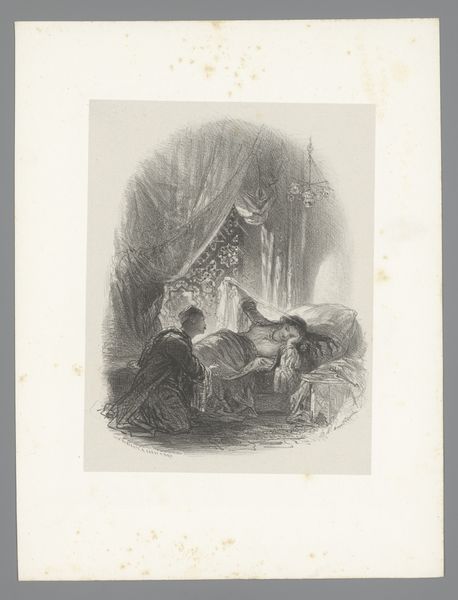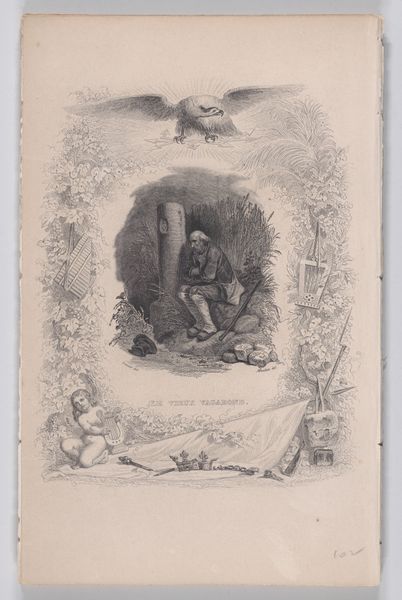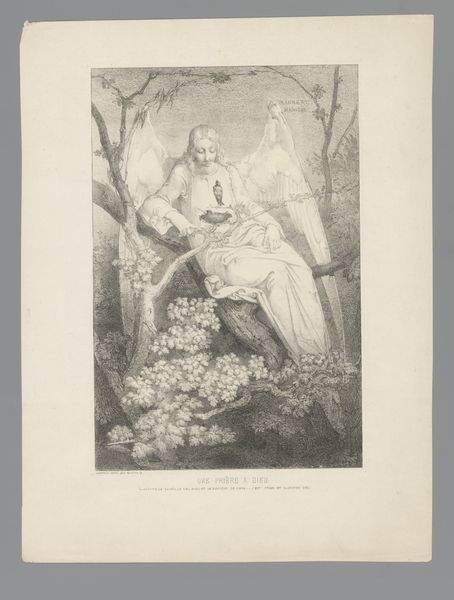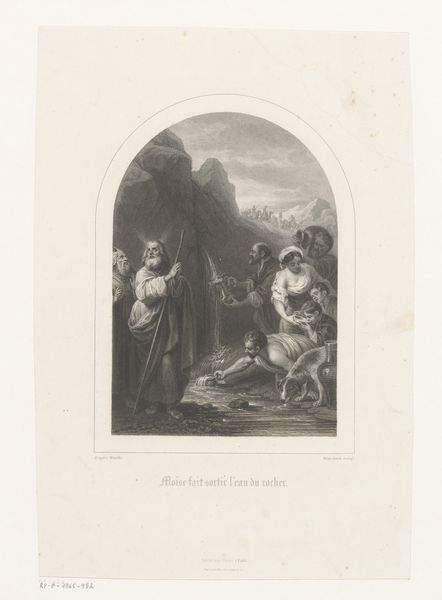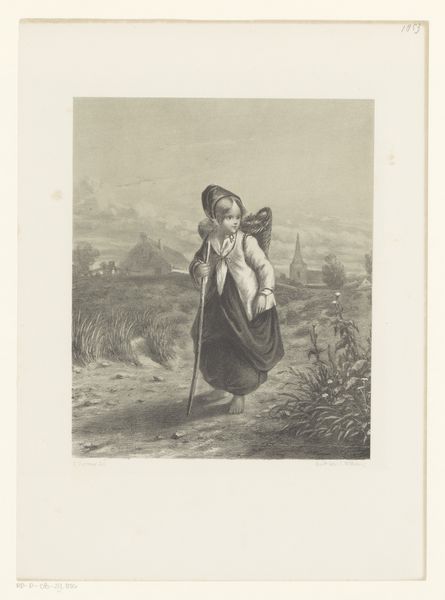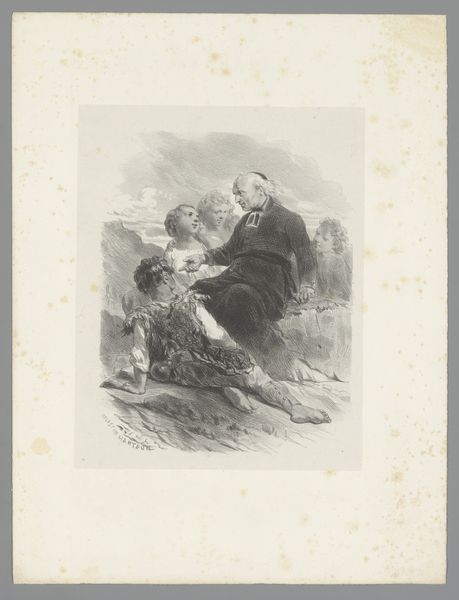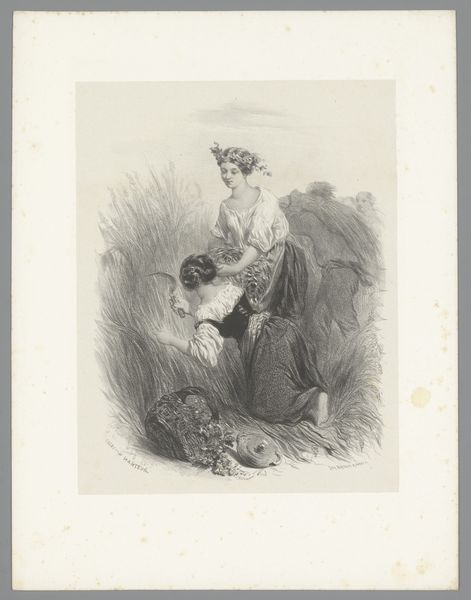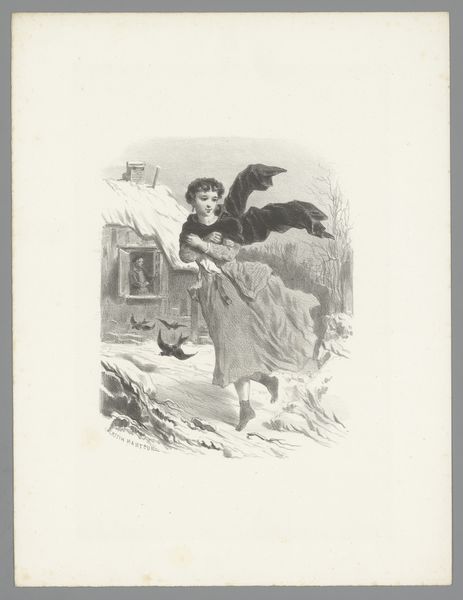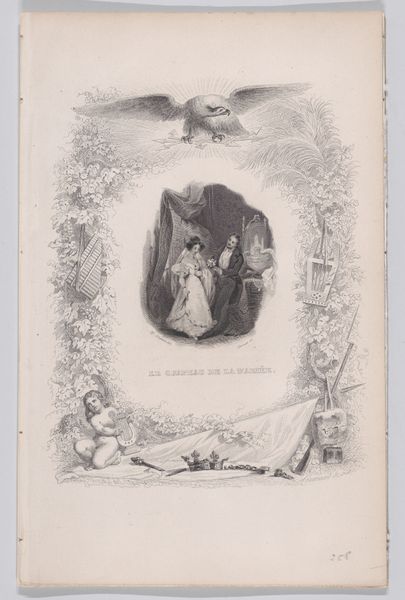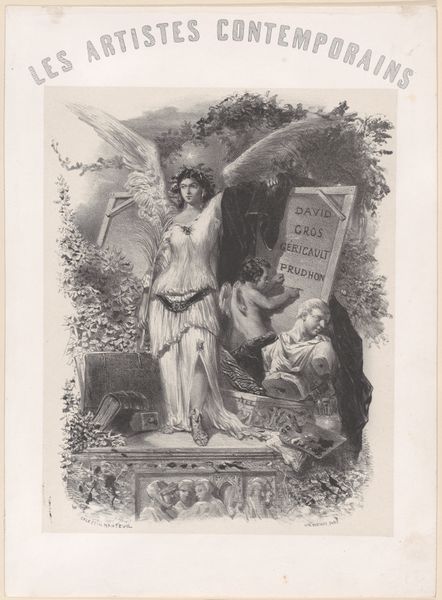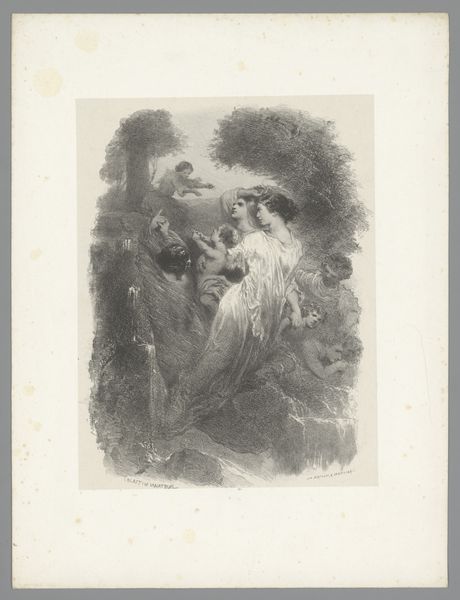
Dimensions: height 354 mm, width 275 mm
Copyright: Rijks Museum: Open Domain
Curator: Célestin Nanteuil, between 1826 and 1880, rendered in ink, pencil, pastel, and coloured pencil on paper, created this piece, tellingly titled “Korte levensloop van een overleden baby,” or “Short Life of a Dead Baby.” Editor: Heavens. Even without understanding the title, the feeling just hits you – a wall of profound sadness. It’s beautifully drawn, but incredibly melancholic, wouldn't you say? The angelic figure seems almost…severe? Curator: Severe is an interesting word choice. The drawing functions as allegory; its romantic style places the death within the broader narrative of the family and society. See the mourning mother and father, figures emblematic of grief, and at the apex, a serene angel carries a newly deceased baby heavenward, their short lives juxtaposed to emphasize loss. Editor: But the composition…there’s something about the stark division between the grieving earthly figures and that celestial, idealized scene above. Almost as if their grief and experience will never touch what that angelic figure embodies. Curator: The angel may also function to legitimize systems that caused higher infant mortalities at the time. Its detachment feels almost clinical, it speaks to the normalisation of child death during that historical context, not so much offering hope, as shoring up social norms that tolerated it. Editor: That resonates. Viewing it through that lens, I find my own grief deepening for those invisible people rendered statistically and relegated to this sense of normalisation by these artistic narratives. The sharp spire of a church visible beyond the angel perhaps echoes what you mention about upholding the status quo. Curator: Yes, while offering a narrative around grief, death, family, it reinforces its specific social role: consoling, grieving, moving on in spite of everything; maintaining the fabric of the whole. The drawing performs a difficult social task, aestheticising death and grief. Editor: Ultimately, its visual poetry forces a dialogue. I suppose that tension between comfort and confrontation is where the work's enduring power lies. Curator: A necessary discomfort, indeed. A reminder to interrogate these images.
Comments
No comments
Be the first to comment and join the conversation on the ultimate creative platform.

